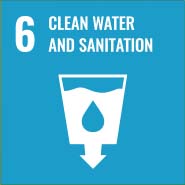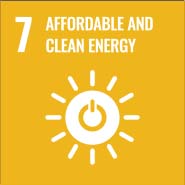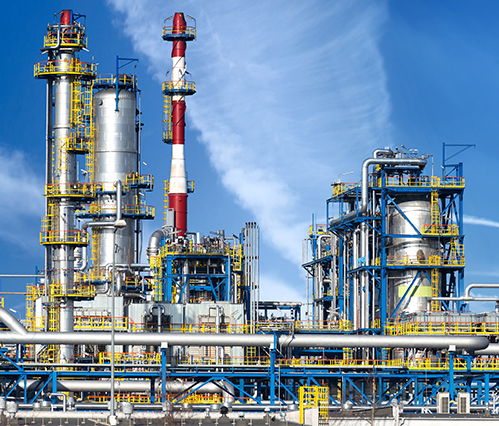Energy and Greenhouse Gas Management
Having been successively awarded the ISO 14001 Environmental Management Systems, ISO 45001 Occupational Health and Safety Management Systems, and ISO 50001 Energy Management Systems certifications since 1997, we continue to make improvements to our manufacturing processes, implement pollution control measures, reduce energy consumption, eliminate hazards, and minimize occupation accidents using the PDCA approach. Moreover, we control our impact on the environment using knowledge tools and technologies to achieve a balance between the environment, society, and the economy, as well as implement green and sustainable development to meet stakeholders’ expectations. CSCC’s management and implementation of environmental, safety, and energy systems are detailed as follows:
| Every week | Factory affairs meetings | The heads of manufacturing departments discuss environmental, safety, health, and energy issues and the progress of improvements made with the heads of various departments and first-line workers |
| Every week | Business management meetings | The President discusses environmental, safety, health, and energy issues with the heads of various departments and first-line workers, reviews the implementation outcomes, and adjusts the relevant approaches in a timely manner |
| Every quarter | Occupational Safety and Health Committee | |
| Every year | Environment, safety and health management system review meetings | |
| Every month | Carbon reduction meeting | The President discusses energy-saving plans, reviews carbon reduction achievements with the heads of various departments and first-line workers, adjusts the relevant approaches in a timely manner |
SDG



Performance highlights in 2024
- Based on a 2% reduction from the baseline year (1,724 tons), the Company had completed 17 energy-saving projects. The total reduction of 2,236.7 tons represented a 129.7% achievement rate, equivalent to a 2.60% reduction from the baseline year.
- The average energy-saving rate for the entire company is 1.68%.

Significance to CSCC
We implement energy management, collect information on financial impact that can assist in decision-making and is forward-looking, and help stakeholders understand the risks and opportunities involved in our move towards energy conservation and carbon reduction and the transition to a low-carbon economy.
Goals
| Short-term goals (2025) |
Medium-term goals (2026~2029) |
Long-term goals (2030 and beyond) |
|---|---|---|
|
|
|
Management strategies
Continue to refine energy conservation plans for our manufacturing departments by referencing the best available technologies from our international peers, complete the TCFD risk matrix, and introduce a climate governance system
Resources invested and implementation outcomes
Kindly refer to Annual ESG Plan and Implementation Outcomes in this Report for more details.
Energy Consumption

In the wake of climate change, coping with climate disasters has become a critical issue for business operations in recent years. After formulating our short-, medium-, and long-term ESG goals in 2021, we have not only established our greenhouse gas inventory plan and annual reduction targets and schedule in response to climate change and carbon neutrality, but also completed a carbon footprint inventory of our major products. The implementation progress is reported to the Board of Directors on a regular basis for tracking and evaluation.
In 2021, we rolled out the TCFD initiative and established a voluntary climate-related financial disclosure system to collect information on financial impact that can assist in decision-making and is forward-looking, so that our stakeholders can understand the risks and opportunities involved in our move towards energy conservation and carbon reduction and the transition to a low-carbon economy. We also completed a risk matrix assessment and introduced a climate governance system.
Our Coal Chemical Manufacturing Department and Carbon Chemical Manufacturing Department conduct an inventory of Categories 1 and 2 greenhouse gas emissions for the previous year on their own each year. Furthermore, Category 3 greenhouse gas emissions have been included in the scope of inventory according to the ISO 14064:2018 greenhouse gas emissions standards since 2021. A third-party verification body is commissioned to carry out verification of these inventories. CSCC's energy consumption situation for the last three years is detailed as follows:
CSCC's energy consumption situation for the last three years
| Item | 2022 | 2023 | 2024 | |
|---|---|---|---|---|
| CSCC Headquarters | Electricity (MWh) | 73 | 203 | 204 |
| Coal Chemical Manufacturing Department | Electricity (MWh) | 50,919 | 51,578 | 52,108 |
| Steam (ton) | 172,244 | 161,542 | 158,227 | |
| Coke oven gas (kilostere) | 0 | 289 | 0 | |
| Natural gas (kilostere) | 8,522 | 8,024 | 8,579 | |
| Diesel oil (kL) | 438 | 340 | 320 | |
| Total energy consumption (GJ) | 1,042,010 | 995,332 | 1,011,218 | |
| Total amount of products (ton) | 647,324 | 580,040 | 551,544 | |
| Energy intensity (GJ per ton of products) | 1.61 | 1.72 | 1.73 | |
| Carbon Chemical Manufacturing Department | Electricity (MWh) | 32,771 | 38,375 | 36,103 |
| Diesel oil (kL) | 9.20 | 9.40 | 12.60 | |
| Liquefied petroleum gas (kg) | 26,500 | 19,450 | 25,250 | |
| Total energy consumption (GJ) | 119,580 | 139,234 | 138,082 | |
| Total amount of products (ton) | 2,108 | 2,292 | 2,292 | |
| Energy intensity (GJ per ton of products) | 56.73 | 60.75 | 60.25 | |
|
Note: The heating values used in the calculation of the items above are listed as follows: 1 kWh of electricity = 860 Mcal; 1 metric ton of steam = 710Mcal; 1 kilostere of coke oven gas = 4,197 Mcal; 1 kilostere of natural gas = 9,307 Mcal; 1 kL of diesel oil = 8,330 Mcal; and 1 kilogram of liquefied petroleum gas = 12Mcal. The energy usage is based on the calculation data provided by the external; procurement unit. |
||||
CSCC's production volume by product category in 2024 is as follows:(Unit: ton)
In 2024, we purchase 100% of its electricity, use 0% of renewable energy, and use 0% of self generated energy.
We have established the Greenhouse Gas Inventory Management Procedures, which are intended for our greenhouse gas inventory system, in compliance with international greenhouse gas standards such as ISO 14064-1:2006 and domestic rules and regulations related to greenhouse gases such as the Guidelines for Greenhouse Gas Inventory and Registration promulgated by the Environmental Protection Administration, Executive Yuan. We complete our own greenhouse gas inventory on a regular basis each year. With the introduction of the 2018 edition of ISO 14064-1 and the inclusion of other sources of indirect emissions such as employee commuting and transportation in the scope of inventory, CSCC has conducted inventory and verification on a regular basis according to the latest edition of the standards since 2021. A third-party unit is also commissioned to carry out verification to ensure the validity of related data. The categories of greenhouse gases inventoried based on our activities, products, and services, as well as their scope of operations are listed as follows:
| Category | Corresponding activity/ Type of equipment | Source of emissions | |
|---|---|---|---|
| Scope 1 | Stationary combustion sources (i.e., stationary combustion of fuels at a facility) | Emergency power generators | Diesel |
| Gas boilers | Natural gas | ||
| Other reheating furnaces | Natural gas | ||
| Process emission sources (owned or controlled by the organization) | QA laboratory | Acetylene | |
| Mobile combustion sources (i.e., combustion of fuels in transportation modes owned and controlled by the organization, such as automobiles, trucks, trains, planes, and ships) | Engine-powered vehicles (company vehicles) | Gasoline and diesel | |
| Fugitive greenhouse gas emission sources (intentional and unintentional emissions) | Fugitive emissions from air conditioning systems (use, maintenance, and filling) | R410a/R404a/R134a/R22/R32 | |
| Company vehicles (use, maintenance, and filling) | R134a | ||
| Biogas from septic tanks (employee use) | CH4 | ||
| Maintenance and repair | WD-40 | ||
| Fire suppression systems (i.e., fire extinguishers and firefighting equipment) Dry powder (phosphate excluded) |
CO2 | ||
| Volatile organic compounds | CO2 | ||
| Scope 2 | Indirect emissions from input energy sources | Power supply from Taiwan Power Company (Taipower) | Electricity purchased from Taipower |
| Steam supply | Steam purchased from China Steel Corporation | ||
| Scope 3 | Indirect emissions from transportation | Emissions from the transportation of raw materials | Fuels |
| Emissions from the transportation and distribution of the organization's products | Fuels | ||
| Emissions from employee commuting | Fuels | ||
| Emissions from business travel | Fuels | ||
The coal chemical production plant uses the 2022 reporting year as the base year for greenhouse gas inventory. The carbon emission factor for purchased electricity is calculated using the most recent emission factor of 0.474kg CO2e per kWh, as announced by the Bureau of Energy, Ministry of Economic Affairs (updated on April 14, 2025). Carbon emission factors for other energy sources are calculated using the latest factors published by the Environmental Protection Administration. The scope of the 2024 greenhouse gas inventory includes the coal chemical production plant and the operational headquarters. Direct greenhouse gases (Scope 1) and indirect greenhouse gases (Scope 2) account for 28% and 72% of the total emissions, respectively. The emission quantities for each greenhouse gas scope for the base year and the past three years (the 2024 inventory data is currently in progress and has not yet been verified) are as follows:
| Year | Category 1 | Category 2 | Total emissions | Reference |
|---|---|---|---|---|
| 2022 | 32,656 tons | 59,906 tons | 92,562 tons | IPCC 2013 Greenhouse Gas Inventory Report |
| 2023 | 27,054 tons | 57,450 tons | 84,504 tons | IPCC 2013 Greenhouse Gas Inventory Report |
| 2024 | 22,460 tons | 56,387 tons | 78,847 tons | IPCC 2013 Greenhouse Gas Inventory Report |
For the Carbon Chemical Manufacturing Department, the base year for greenhouse gas inventory is 2018, i.e., the year when the first greenhouse gas inventory was conducted, using the year 2022 as the baseline year for the greenhouse gas inventory. The primary type of energy source used in manufacturing processes is electricity, as most of the processes involve the use of non-combustion equipment, with only a few using liquefied petroleum gas as an energy source. In 2024, direct emissions (Scope 1) and indirect emissions (Scope 2) accounted for 3% and 97% of the total emissions, respectively. Greenhouse gas emissions from each scope of emission source at the Carbon Chemical Manufacturing Department for the last three years are detailed as follows:
| Year | Category 1 | Category 2 | Total emissions | Reference |
|---|---|---|---|---|
| 2022 | 203 tons | 16,741 tons | 16,944 tons | IPCC 2013 Greenhouse Gas Inventory Report |
| 2023 | 121 tons | 18,995 tons | 19,116 tons | IPCC 2013 Greenhouse Gas Inventory Report |
| 2024 | 460 tons | 16,678 tons | 17,138 tons | IPCC 2013 Greenhouse Gas Inventory Report |
CSCC's GHG emissions intensity for the last three years are listed as follows:
| Year | Parent company-only revenue | Category 1 | Category 2 | Total emissions | Total emissions/ Revenue |
|---|---|---|---|---|---|
| 2022 | NT$10,442,949 | 32,859 tons | 76,647 tons | 109,506 tons | 0.0105 |
| 2023 | NT$8,091,691,000 | 27,186 tons | 76,481 tons | 103,667 tons | 0.0128 |
| 2024 | NT$7,489,924 | 22,927 tons | 73,159 tons | 96,086 tons | 0.0128 |
According to the carbon reduction projects completed in 2024, CSCC reduced CO2 emissions by 2,236.7 tons. The related projects and the results are as follows:
| 項次 | 節能行動方案 | 改善後減碳量(MT CO2e/年) |
|---|---|---|
| 1 | Replacement of ash high-temperature furnaces with rapid furnaces | 2.67 |
| 2 | Improvement of waste heat recovery system in solvent recovery units | 203.30 |
| 3 | Pipeline tracking in the west plant changed from MPS to LPS | 60.32 |
| 4 | Deployment of P951D high-efficiency pump with 3D impeller | 33.79 |
| 5 | X931/X933 permanent magnet variable-frequency chillers | 370.61 |
| 6 | TVR steam recovery system | 359.37 |
| 7 | Optimization of steam efficiency for E4302 | 326.70 |
| 8 | Installation of variable-frequency controllers for MF951ABC to regulate speed | 60.34 |
| 9 | Electricity-saving improvements for T663A electric boilers | 146.72 |
| 10 | Energy-saving plan for laboratory computers | 1.45 |
| 11 | Energy-saving improvements for laboratory high-temperature furnaces | 1.43 |
| 12 | AI algorithm for optimal electricity-saving settings in T663A | 146.72 |
| 13 | Energy-saving improvement plan for C615B | 61.00 |
| 14 | Replacement of air source for R2515 upper cover movement | 13.70 |
| 15 | Electricity-saving improvement for MG11 total power supply | 273.66 |
| 16 | Electricity-saving improvement for MGP total power supply | 161.26 |
| 17 | Energy Savings for DC2111/2/7 Dust Collector Cartridge Reverse-Blowing with IA | 13.68 |
| 合計 | 2,236.72 | |
We continue to refine the energy conservation plans for our manufacturing departments in accordance with the best available technologies from our international peers. Our performance in the implementation of relevant improvements for 2024 and energy conservation management plans for the last three years is detailed as follows:
| Energy conservation action plan | Estimated benefit from energy conservation | |
|---|---|---|
| Coal Chemical Manufacturing Department | Improvement of waste heat recovery system in solvent recovery units | Reduce steam consumption by 1,980 tons each year |
| X931/X933 permanent magnet variable-frequency chillers | Reduce electricity consumption by 750 MWh each year | |
| TVR steam recovery system | Reduce steam consumption by 1,815 tons each year | |
| Optimization of steam efficiency for E4302 | Reduce steam consumption by 1,650 tons each year | |
| Installation of variable-frequency controllers for MF951ABC to regulate speed | Reduce electricity consumption by 122 MWh each year | |
| Electricity-saving improvements for T663A electric boilers | Reduce electricity consumption by 297 MWh each year | |
| AI algorithm for optimal electricity-saving settings in T663A | Reduce electricity consumption by 297 MWh each year | |
| Energy-saving improvement plan for C615B | Reduce natural has consumption by 29.842 kilostere each year | |
| Deployment of P951D high-efficiency pump with 3D impeller | Reduce electricity consumption by 68 MWh each year | |
| Carbon Chemical Manufacturing Department | Replacement of air source for R2515 upper cover movement | Reduce electricity consumption by 28.85 MWh each year |
| Electricity-saving improvement for MG11 total power supply | Reduce electricity consumption by 553.96 MWh each year | |
| Electricity-saving improvement for MGP total power supply | Reduce electricity consumption by 326.44 MWh each year | |
| Energy Savings for DC2111/2/7 Dust Collector Cartridge Reverse-Blowing with IA | Reduce electricity consumption by 27.70 MWh each year |
| Project | 2022 | 2023 | 2024 | |
|---|---|---|---|---|
| Coal Chemical Manufacturing Department | Number of energy conservation action plans | 9 | 35 | 13 |
| Amount of electricity saved (MWh) | 156 | 1,400 | 1,546 | |
| Amount of steam saved (ton) | 7,935 | 2,367 | 5,750 | |
| Natural Gas Saved (Nm3) | 59,202 | 236,600 | 29,842 | |
| Amount of diesel oil saved (kL) | 76 | 62 | - | |
| Total amount of energy saved (GJ) | 29,094 | 23,453 | 20,116 | |
| Cumulative electricity saving rate (%) | 1.51 | 1.55 | 1.61 | |
| Total energy saving rate (%) | 2.79 | 2.36 | 2.23 | |
| Reduction in greenhouse gas emissions (ton of CO2e) | 2,907 | 1,794 | 1,774 | |
| Carbon Chemical Manufacturing Department | Number of energy conservation action plans | 3 | 6 | 4 |
| Amount of electricity saved (MWh) | 357 | 263 | 937 | |
| Total amount of energy saved (GJ) | 1,286 | 946 | 3,368 | |
| Annual electricity saving rate (%) | 0.80 | 0.70 | ||
| Cumulative electricity saving rate (%) | 1.81 | 1.49 | 1.74 | |
| Total energy saving rate (%) | 1.81 | 1.49 | 1.41 | |
| Reduction in greenhouse gas emissions (ton of CO2e) | 177 | 130 | 462 |
Greenhouse Gas Control
According to the 2015 Paris Climate Agreement, each country must review their own contributions to carbon reduction with the goal of limiting global warming to well below 2 degrees Celsius by the end of the century. In 2018, the Intergovernmental Panel on Climate Change (IPCC) recommended that global warming should be controlled further to within 1.5 degrees Celsius while emphasizing the need to achieve a 45% reduction in carbon emissions by 2030 and realize net zero emissions (and carbon neutrality) by 2050.
To align with the aforementioned policy goals and implement greenhouse gas control, the Company completed a carbon footprint assessment and external verification for ten key products, including mesophase pitch carbon microspheres and mesophase graphite carbon microspheres, in 2023. Additionally, the Company conducts an annual ISO 14064-1:2018 standard greenhouse gas inventory and external verification to establish reduction benchmarks. Through various energy-saving and process improvement measures, the mid- to long-term goal post-2024 is to reduce greenhouse gas emissions by 2% or more annually, and to purchase green electricity to lower carbon emissions. Following the 2024 inventory (currently unverified), the total greenhouse gas emissions across categories were 106,643 tons. Starting in 2024, the Company will implement annual reduction plans for each category of emissions, aiming to sustain and effectively reduce greenhouse gas emissions.
Greenhouse gas emissions at CSCC in 2024
| Scope | Gas emissions | Ratio |
|---|---|---|
| direct greenhouse gas emissions | 22,927 tons | 21.5% |
| indirect greenhouse gas emissions from input energy sources | 73,157 tons | 68.6% |
| greenhouse gas emissions from transportation | 10,557 tons | 9.9% |